
Safety and emission reduction, though not paramount, are gaining traction in the Indian commercial vehicles space. Wabco India, which has been acquired by ZF, is bullish on the market which is being driven by regulations and trends. According to P Kaniappan, Managing Director, WABCO India Ltd, the new independent Commercial Vehicle Control Systems division with ZF will offer better value and service to the Indian customers in the local context. The company keeps focusing on bringing its global capabilities to cater to new regulations and demand for advanced driver assistance, braking, stability control, suspension, transmission automation and aerodynamics to improve safety, efficiency and connectivity of commercial vehicles.
 ZF Friedrichshafen completed its USD 7 billion acquisition of commercial vehicle technology supplier Wabco Holdings amid the pandemic last year. The integration is still underway and is expected to finish in early 2022. As part of the process, the company’s initial focus was to ensure seamless business continuity with customers and to assure employees that the acquisition is another part of the business. “From day one, we had communication with all our employees, giving them the rationale and logic of this merger with the customer centricity approach for which we are known in India and globally,” said P Kaniappan, Managing Director, WABCO India Ltd.
ZF Friedrichshafen completed its USD 7 billion acquisition of commercial vehicle technology supplier Wabco Holdings amid the pandemic last year. The integration is still underway and is expected to finish in early 2022. As part of the process, the company’s initial focus was to ensure seamless business continuity with customers and to assure employees that the acquisition is another part of the business. “From day one, we had communication with all our employees, giving them the rationale and logic of this merger with the customer centricity approach for which we are known in India and globally,” said P Kaniappan, Managing Director, WABCO India Ltd.
The acquisition is expected to create a powerhouse in the commercial vehicle space, offering better value and service, catering to demand for safety, dynamics controls, air suspension systems, fuel efficiency, emission reduction, fleet management and connectivity.
Wabco, which will be the 10th division of the Germany-based technology company, will operate as the independent Commercial Vehicle Control Systems division within ZF.
“We are updating our customers on the integration process, which is taking place at a global level. The integration process is very structured and professionally aligned internally,” added Kaniappan.
Wabco is the leading global supplier of braking control systems and other advanced technologies that improve commercial vehicles’ safety, efficiency and connectivity. Wabco is present in India for more than 60 years. Powered by its vision for accident-free driving and greener transportation solutions, Wabco India provides industry-leading solutions in the autonomous, connected and electric (ACE) domains to the commercial vehicle industry in India.
Currently, Wabco India Limited is a world-class manufacturer and local market leader in advanced braking systems, conventional braking products and related air assisted technologies and systems in India. Headquartered in Chennai, Wabco India has five manufacturing facilities, an advanced technology development centre, a vehicle testing facility and a nationwide aftermarket distribution and services network. Wabco India is committed to the long-term success of its customers by leveraging Wabco’s robust global technology portfolio.
Though Kaniappan agrees that the integration would have been a smoother ride if the pandemics had not caused subsequent lockdowns, he said the employees’ safety and health have always been paramount for the company. “Yes, the focus could have been much more intense (on the integration), and the timeline could have been shorter. But by the time we started the integration, the pandemic was already affecting the world. So that’s the reason we had to stretch the integration deadline.”
Wabco is betting high on all its product range considering the new regulations related to safety, emission, fuel economy and total cost of ownership. According to Kaniappan, Wabco braking system will remain the main growth driver for the company. India has been traditionally the drum brake system market. However, with the growing emphasis on safety and new mobility, the Indian auto industry is slowly moving on to the air disc brake (ADB), which offers better safety, service, comfort and overall cost. The ADB offers a shorter stopping distance, consistent brake performance and very high mechanical efficiency. The prime advantage of ADB is in weight reduction; the single-piston allows to deliver the same performance with a significantly lower number of components, which in turn minimises parts failure. The company launched disc brake systems for the bus segment, mainly for the front axle. “Within our brake system, the company also aims to improve the efficiency of the braking system that consumes energy,” added Kaniappan.
 He also added that the increased axle load norm demands improvement in the braking system. As a result, the company has upgraded all its braking system products to support the customers, which involves upsizing the compressors or optimising the size of the compressors, upgrading the air management system products, and in some cases, changing the actuators and other elements of the braking system to handle the higher axle load requirement.
He also added that the increased axle load norm demands improvement in the braking system. As a result, the company has upgraded all its braking system products to support the customers, which involves upsizing the compressors or optimising the size of the compressors, upgrading the air management system products, and in some cases, changing the actuators and other elements of the braking system to handle the higher axle load requirement.
Commercial vehicles, trucks, buses and multi-axle vehicles account for a third of road accidents in India. About 84 percent of accidents occur owing to loss of control.
India is also in the process of making electronic stability control (ESC) mandatory soon. The draft notification has been issued for the ESC for buses, which is expected to come into force by April 2023. It aims to achieve higher standards of safety for all categories of vehicles. Wabco India has already been supplying Electronic Stability Control (ESCsmart) for trucks and buses. The ESCsmart improves vehicle stability during highly dynamic driving manoeuvres. ESCsmart provides yaw control on low friction road conditions and roll stability control on high-friction road conditions. It operates independently of driving and load conditions and delivers outstanding control quality due to self-adapting capabilities on the road.
In addition, Indian customers are now testing and evaluating some advanced emergency braking systems for collision avoidance, which immediately assists and alerts the driver. The Wabco executive expects autonomous emergency braking (AEB), which has collision warning systems and collision mitigation systems, will soon be introduced in India. “The technologies available with both companies are to be localised at an appropriate time,” he added.
Wabco India also offers solutions to make air suspension intelligent. The company’s air suspension with electronic control air suspension technology (ECAS) is an alternative to the steel-spring suspension. It improves fuel economy, increases ride comfort, enhances passenger safety and improves vehicular stability. With this technology, the vehicle can sense the road and distribute the load, and the whole system can be raised or lowered to give reduced drag and roll-over protection. Usually, on bumpy roads, air depletes in the suspension; however, ECAS can ignore small humps on the road and air depletion will occur only during the heavy bumps. “With the ECAS, we can reduce air consumption, resulting in saving fuel. As every vehicle goes through a bumpy road, the air depletes. Our electronic control can programme the system so that it does not deplete, and it improves the fine balance of the compressor running. Plus, it can also raise and lower the height of the vehicle’s suspension. This fuel-saving technology will find its place due to CAFÉ norms. This technology is also progressively coming into the Indian market, and we are working with some customers,” added Kaniappan.
 Tyres are the only component that touch the road, which influences the safety and fuel efficiency of the vehicle as well. Inappropriately aired tyres impact the fuel economy and tyres’ life and could also cause accidents. As per a report, over 30 percent of truck breakdowns were caused by tyre failure. Wabco India’s OptiTire, tyre pressure monitoring system (TPMS), helps maintain tyre pressure at the recommended level and detects slow punctures early. This also helps in improving fuel efficiency, rolling resistance and reduction in CO2 emission. The company is also working on getting TMPS sensors localised to make the technology competitive in the country.
Tyres are the only component that touch the road, which influences the safety and fuel efficiency of the vehicle as well. Inappropriately aired tyres impact the fuel economy and tyres’ life and could also cause accidents. As per a report, over 30 percent of truck breakdowns were caused by tyre failure. Wabco India’s OptiTire, tyre pressure monitoring system (TPMS), helps maintain tyre pressure at the recommended level and detects slow punctures early. This also helps in improving fuel efficiency, rolling resistance and reduction in CO2 emission. The company is also working on getting TMPS sensors localised to make the technology competitive in the country.
The AIS 140, standards published by the Automotive Research Association of India (ARAI), mandates a vehicle-tracking device and an emergency button in all existing and new public-service and commercial vehicles. Wabco India also finds business opportunities in the vehicle tracking space.
Fleet management is also another area where Wabco sees more considerable opportunities as the fleets are now realising the importance of the total cost of ownership through such programmes. In addition, Wabco offers its connected vehicle programme for OEMs.
Wabco India also launched fleet management solutions or connected vehicle programme. The company has already strengthened its connected vehicle solutions after the acquisition of Transics. The company has developed a solution in India for the Indian market in the local context. It has partnered with a few customers and is powering its connected vehicle solutions by providing end-to-end solutions from hardware, firmware and software. This includes advanced fuel management, uptime monitoring, trip monitoring and route management, vehicle diagnostics, track and trace of fleets, helping improve fleet logistical efficiency and the safety and comfort of passengers and drivers.
 For the aftermarket, WABCO acquired AssetTrackr. Asset Trackr offers global capabilities with a value proposition for the Indian market. The company is now leveraging its aftermarket and using the aftermarket network, service centres to promote Asset Trackr as another significant new revenue stream.
For the aftermarket, WABCO acquired AssetTrackr. Asset Trackr offers global capabilities with a value proposition for the Indian market. The company is now leveraging its aftermarket and using the aftermarket network, service centres to promote Asset Trackr as another significant new revenue stream.
Demand for OE commercial vehicles has been slackening for two years. In FY20, commercial vehicle sales plunged 29 percent , followed by over 20 percent in FY21. As a result, the company is banking on its reach and product offering in the aftermarket business. Wabco India’s aftermarket business grew over 50 percent in the first three months of this calendar year.
Taking a lesson from the pandemic that has severely impacted commodity prices, Wabco explores the chances to procure steel, aluminium from the prime producers in the local market to have stability in supply. “We have learned a lot during recent times. We can anticipate the things in a much better way and can have better preparedness, flexibility and agility which will help us to face any potential headwinds that are going to come,” added Kaniappan. (MT)
- Hagerty UK
- Vehicle Excise Duty Exemption
- VED Exemption
- Historic & Classic Vehicles Alliance
- Classic Cars
UK Chancellor Maintains Vehicle Excise Duty Exemption For Classic Cars
- By MT Bureau
- November 27, 2025

The UK's cherished classic car community can finally breathe a collective sigh of relief. The decisive action by Chancellor Rachel Reeves in the Autumn Budget to maintain the Vehicle Excise Duty (VED) exemption for vehicles over 40 years old has ended a prolonged period of uncertainty, securing a stable future for this vital sector. Mark Roper, Managing Director of Hagerty UK, welcomed this clarity, noting that the confirmed freeze on fuel duty further solidifies a supportive environment for owners. He underscores that this is a significant win for the GBP-7.3-billion industry that supports over 100,000 jobs and contributes GBP 3 billion annually to the UK economy, all while championing an inherently sustainable form of motoring.
This perspective on sustainability is reinforced by Dale Keller, CEO of the Historic & Classic Vehicles Alliance (HCVA), who affirms that the tax exemption logically aligns with environmental objectives. Classic vehicles, preserved as moving heritage, have a negligible lifecycle carbon footprint compared to new manufacturing and are driven infrequently. The original principle of the exemption remains valid, as applying a modern tax to these rarely used assets would be inequitable.
Alongside the VED news, the Chancellor confirmed the continuation of the MOT exemption for classic cars, though this will remain under review. On this point, Roper of Hagerty UK strikes a note of caution, observing that many within the industry advocate for an annual roadworthiness check. He notes that a great number of responsible classic owners voluntarily submit their vehicles for an MOT each year, valuing the independent assurance of safety and mechanical integrity it provides.
For Hagerty UK, as a specialist insurer deeply embedded in this world, the government’s affirmation is a powerful endorsement of the sector's cultural and economic value. Through its vibrant Clubhouse at Bicester Heritage and unique events like RADwood, Hagerty is actively fostering this passionate community. Similarly, the HCVA continues its mission to protect and promote the diverse ecosystem of specialists, restorers and businesses that form the backbone of this multi-billion-pound industry, ensuring its legacy for generations to come.
Mahindra Racing Extends Formula E Involvement With GEN4 Manufacturer Commitment
- By MT Bureau
- November 26, 2025
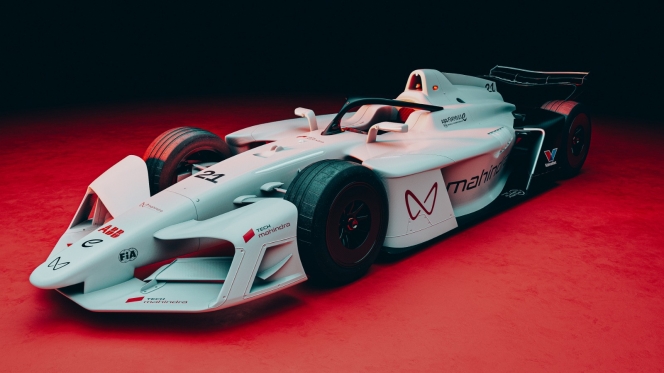
Mahindra Racing has solidified its long-term future in electric motorsport by confirming its manufacturer commitment to the GEN4 era of the ABB FIA Formula E World Championship, starting in 2026/27. This announcement, made during the unveiling of its new M12Electro race car in India, extends a relationship that began in 2013 when Mahindra stood as both a founding team and the first OEM to join the all-electric series.
The team's current trajectory underscores the significance of this pledge. Following a dramatic 18-month transformation under CEO and Team Principal Frederic Bertrand, Mahindra Racing has evolved from a backmarker into a consistent front-runner. This resurgence was powered by the redesigned M11Electro, in which drivers Nyck de Vries and Edoardo Mortara collectively secured five podium finishes in Season 11, catapulting the squad to a stellar fourth place in the world championship. The newly launched M12Electro is the intended vehicle to maintain this status as a top-five contender and a regular threat for podium positions in the forthcoming season.
The technical landscape for GEN4 promises to further electrify the sport. The next-generation cars will boast a peak race power of 450 kw, with a potent 600 kw available in ATTACK MODE to empower aggressive overtaking. Enhanced strategic possibilities will come from a race energy capacity of up to 55 kWh and a remarkable 700 kw of regenerative braking. In a continued commitment to sustainability, the GEN4 chassis will be produced from 100 percent recyclable materials and will feature two distinct aerodynamic configurations – high-downforce for qualifying and low-downforce for races – to optimise performance.
Mahindra's ambition is to leverage this new regulatory chapter to build on its renewed momentum, chase incremental gains and establish itself as a confirmed championship contender against elite manufacturers like Porsche and Jaguar. This competitive platform also serves a broader purpose, aligning with the Mahindra Group’s sustainability initiatives. The team, the first in Formula E to earn the FIA’s Three-Star Sustainability Accreditation, has embarked on its ‘Planet Positive’ programme. This initiative is dedicated to driving positive impact in communities and economies, accelerating climate solutions and using the intersection of sport and technology as a catalyst for a better future.
R Velusamy, Chairman, Mahindra Racing, said, "Mahindra Racing has always been a symbol of our commitment to the Race to Road journey – where cutting-edge innovation on the track directly shapes the clean, intelligent and high-performance mobility solutions we deliver to customers. Formula E is a powerful platform for innovating new technology, giving us the ability to experiment, learn and advance electric powertrain efficiency, sustainable materials and software intelligence. As we step into the GEN4 era, our ambition only grows stronger. Continuing this journey till 2030 is a testament to our belief in the sport, in electrification and in India’s role in leading global sustainable mobility. We are proud to champion this future, and GEN4 represents an exciting new chapter for Mahindra Racing and the Mahindra Group.”
Frederic Bertrand, Team Principal, Mahindra Racing, said, “I’m delighted to share this announcement that Mahindra Racing will remain in Formula E as a manufacturer for the GEN4 era. As a team, we have been on a fantastic journey over the past two seasons. What we have built and achieved as a group has been exceptional, and with this announcement, we now have the platform to keep growing and developing and achieve even greater success in the future. None of this would be possible without our colleagues across the Mahindra Group. They have bought into the project and the vision, and we will keep working hard to not only make India proud but also showcase exactly why it has the potential to be a major player on the world stage in the automotive and technology industries. Their enthusiasm to ‘Scream Electric’ is hugely inspiring to the whole team, and we will continue to represent them with pride in this next exciting chapter of our Formula E story in the coming years.”
Jeff Dodds, CEO, Formula E, said, “We’re thrilled to confirm Mahindra’s long-term commitment to the GEN4 era of the ABB FIA Formula E World Championship. As one of our founding teams, Mahindra has been with us since the very beginning, consistently championing electric racing and innovation. Their bold vision for sustainable mobility and continued investment in advanced EV technology perfectly align with Formula E’s mission. Mahindra’s enduring presence not only strengthens our position in a key market but also reinforces Formula E’s role as a global platform for driving positive change. We’re excited to see what they’ll achieve in this next chapter of performance and progress.”
Marek Nawarecki, Senior Circuit Sport Director, FIA, said, “Following the GEN4 reveal and the really positive sentiment reported, we are pleased to announce Mahindra as the sixth manufacturer to commit to Formula E’s GEN4 era. This is testament to the relevance of the road map we are implementing in Formula E for OEMs. GEN4 underscores just how far the ABB FIA Formula E World Championship has come since 2014 and we are looking forward to continuing this journey with Mahindra as one of the founding teams and partners.”
Mahindra Charts Aggressive Decade Of Growth Across Auto, Farm, CV And Last-Mile Mobility Businesses
- By MT Bureau
- November 21, 2025
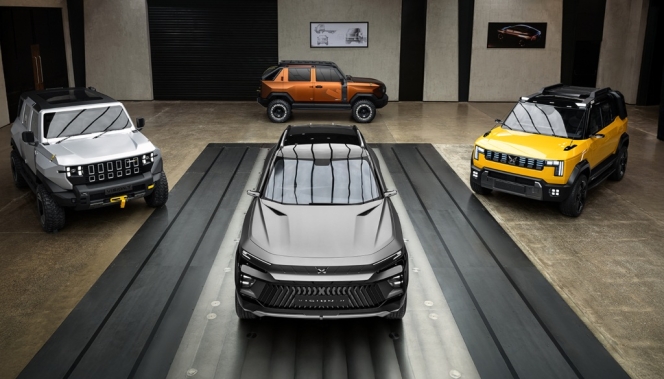
Mumbai-headquartered conglomerate Mahindra Group has unveiled an ambitious long-term roadmap across its core mobility and equipment businesses, detailing plans for accelerated growth in the automotive, farm equipment, commercial vehicle and last-mile mobility segments.
The strategy, presented at its Investor Day 2025, underscores the Group’s intent to leverage India’s expanding economy while deepening global market participation.
Mahindra expects its consolidated automotive business to grow 8x between FY2020 and FY2030, driven primarily by a stronger push in sports utility vehicles (SUVs) and light commercial vehicles (LCVs).
The company aims to become the world’s fastest-growing SUV brand. Its product strategy is rooted in new-age platforms such as INGLO and NU_IQ, enhanced digital architecture under MAIA and Adrenox, and continued investment in safety and performance.
At present, Mahindra holds more than 26 percent revenue share in India’s SUV segment as of the first half of FY2026. Strong consumer traction for models including the Thar, XUV700, XUV3XO and the Born Electric (BE) series is expected to support the company’s international expansion to right-hand-drive and left-hand-drive markets across Europe, Australia, Africa and other regions.
Strengthening leadership in LCV segment
The LCV business, where Mahindra commands 54.1 percent volume share in vehicles under 3.5 tonnes (as of H1 FY2026), is set to be another pillar of growth. The product range has broadened through the Supro, MaXX and Veero platforms, including CNG and electric variants. The company is also preparing for wider adoption of lifestyle pickups, led by the upcoming Global Pik Up.
Mahindra’s LCV strategy emphasises best-in-class total cost of ownership, reduced downtime, enhanced comfort and technology integration, with the segment also targeted for eightfold revenue growth during the decade.
Farm business
Mahindra, the world’s largest tractor manufacturer by volume, has outlined plans for threefold revenue growth in its farm equipment division between FY2020 and FY2030.
The Indian tractor market has continued to shift towards higher horsepower models, particularly in the 40–50 HP range. Mahindra aims to consolidate share in this segment through newer platforms including Yuvo Tech+, Swaraj Protek and Next-Gen ranges. Improvements in crop profitability and a more favourable price environment for tractors are expected to support industry expansion.
Mechanisation levels in India remain uneven, with significant headroom in sowing, crop care and harvesting equipment. Mahindra is expanding its farm machinery portfolio while leveraging its extensive dealer network and manufacturing footprint. The division, already a business exceeding INR 10 billion, is poised for rapid scaling.
Mahindra continues to build presence in key global markets:
- Brazil: 8 percent share in the sub-120 HP category, and about 20 percent in sub-50 HP
- North America: more than 10 percent share in sub-20 HP; upcoming launches to deepen penetration
- ASEAN: early progress with about 4 percent share in pilot territories
Electrification, autonomy, precision agriculture and pay-per-use technology services form the next frontier for Mahindra’s farm business.
Targeting Top-Three Position in ILCVs
Following the acquisition of SML Isuzu, Mahindra is advancing a strategy to be among the top-three player in India’s intermediate and light commercial vehicle (ILCV) market. The domestic CV industry is projected to grow from approximately INR 15,000 billion in FY2025 to nearly INR 20,000 billion by FY2031, supported by infrastructure development, logistics modernisation and GST-driven reforms.
Mahindra aims to expand its presence in ILCVs, while pursuing a selective play in the heavy commercial vehicle category. The strategy benefits from combined advantages across product development, sourcing, aggregates, telematics and network coverage. The company expects up to sixfold revenue growth in its CV business during the decade.
Last-Mile Mobility
Mahindra Last Mile Mobility (MLM) is shaping an aggressive electrification-led growth plan, targeting sixfold revenue expansion and a cumulative one million electric vehicles on the road by 2031. EV sales climbed to 78,678 units in FY2025, led by the Treo series, which remains India’s top-selling electric three-wheeler.
The division has:
- Strengthened its engineering capabilities with a 400-member product development team
- Commissioned a new state-of-the-art manufacturing plant in Telangana
- Expanded production capacity two-fold
- Developed proprietary battery, motor and telematics systems
The product roadmap includes advanced electric three-wheelers and electric four-wheelers tailored for last-mile applications, along with plans to expand exports to more than ten markets. Mahindra’s EV fleet has cumulatively saved over 300 million litres of fuel and prevented more than 185 kilo tonnes of carbon dioxide emissions.
Across all mobility segments, Mahindra’s plan is anchored in product leadership, technology integration, capital discipline and global expansion. A stronger focus on electrification, platform consolidation, digital interfaces, manufacturing efficiency and customer-centric service models is expected to underpin the Group’s growth trajectory.
- Murugappa Group
- Arunachalam Vellayan
- Coromandel International
- EID Parry
- EXIM Bank
- Kanoria Chemicals & Industries
- Indian Overseas Bank
Murugappa Group’s Former Chairman Arunachalam Vellayan Passes Away At 72
- By MT Bureau
- November 18, 2025

Chennai-based conglomerate Murugappa Group has announced the passing of Arunachalam Vellayan (1953–2025) following an illness.
Vellayan was the Chairman Emeritus of Coromandel International and the Former Chairman of the Murugappa Group. He is survived by his wife, Lalitha Vellayan, his sons, Arun Vellayan and Narayanan Vellayan, and his grandchildren.
The Former Chairman dedicated several decades to the Group, providing strategic direction across its businesses. His approach to value creation helped strengthen and expand the Group, contributing to its reputation as a respected conglomerate.
He served on the Boards of various Murugappa Group companies, including as Chairman of Coromandel International and EID Parry.
Outside the Group, he served on the Boards of entities such as Kanoria Chemicals & Industries, EXIM Bank and Indian Overseas Bank.


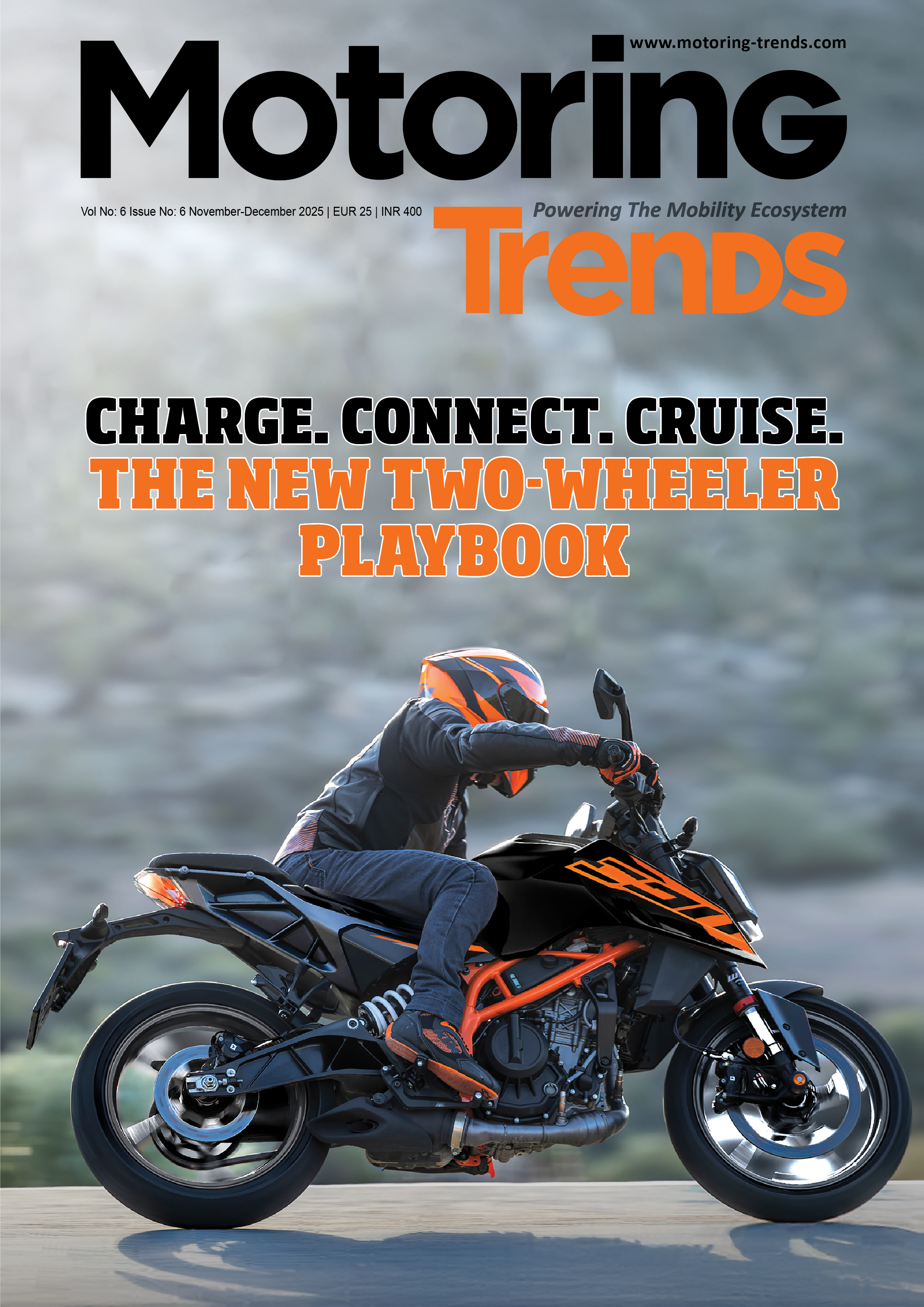
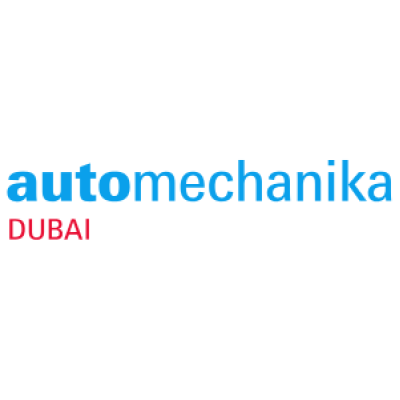
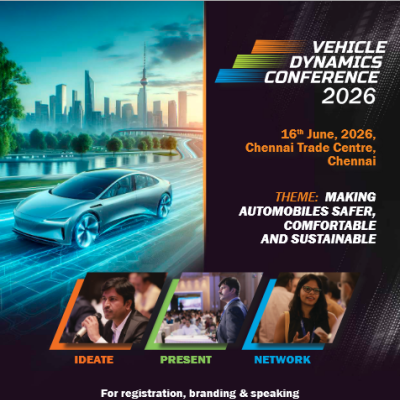
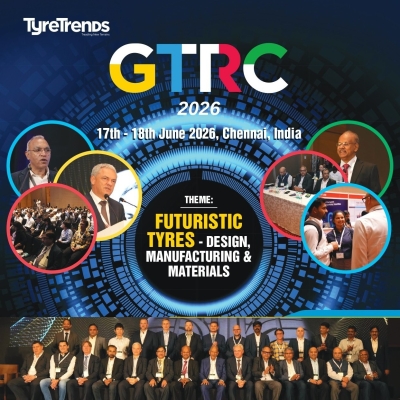
Comments (0)
ADD COMMENT